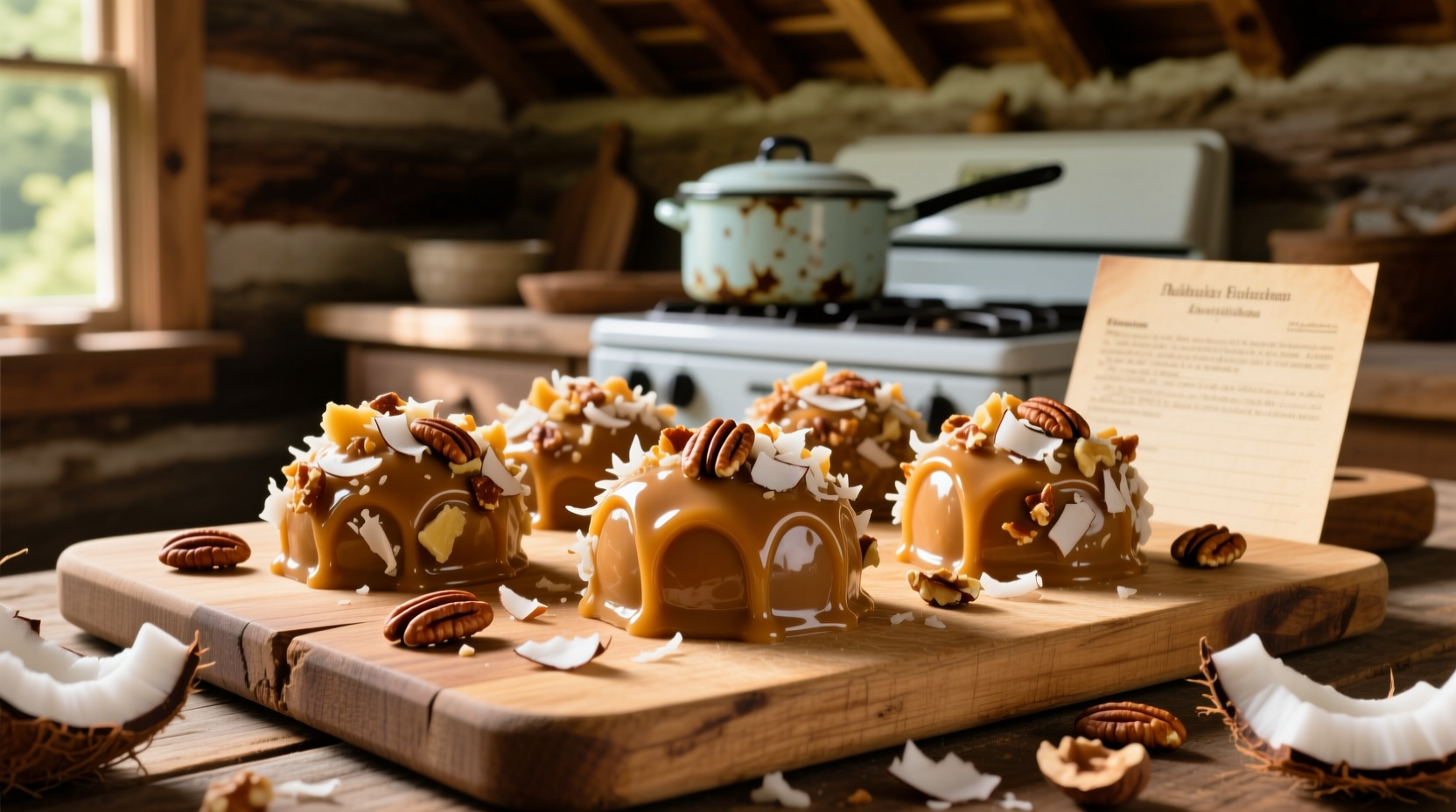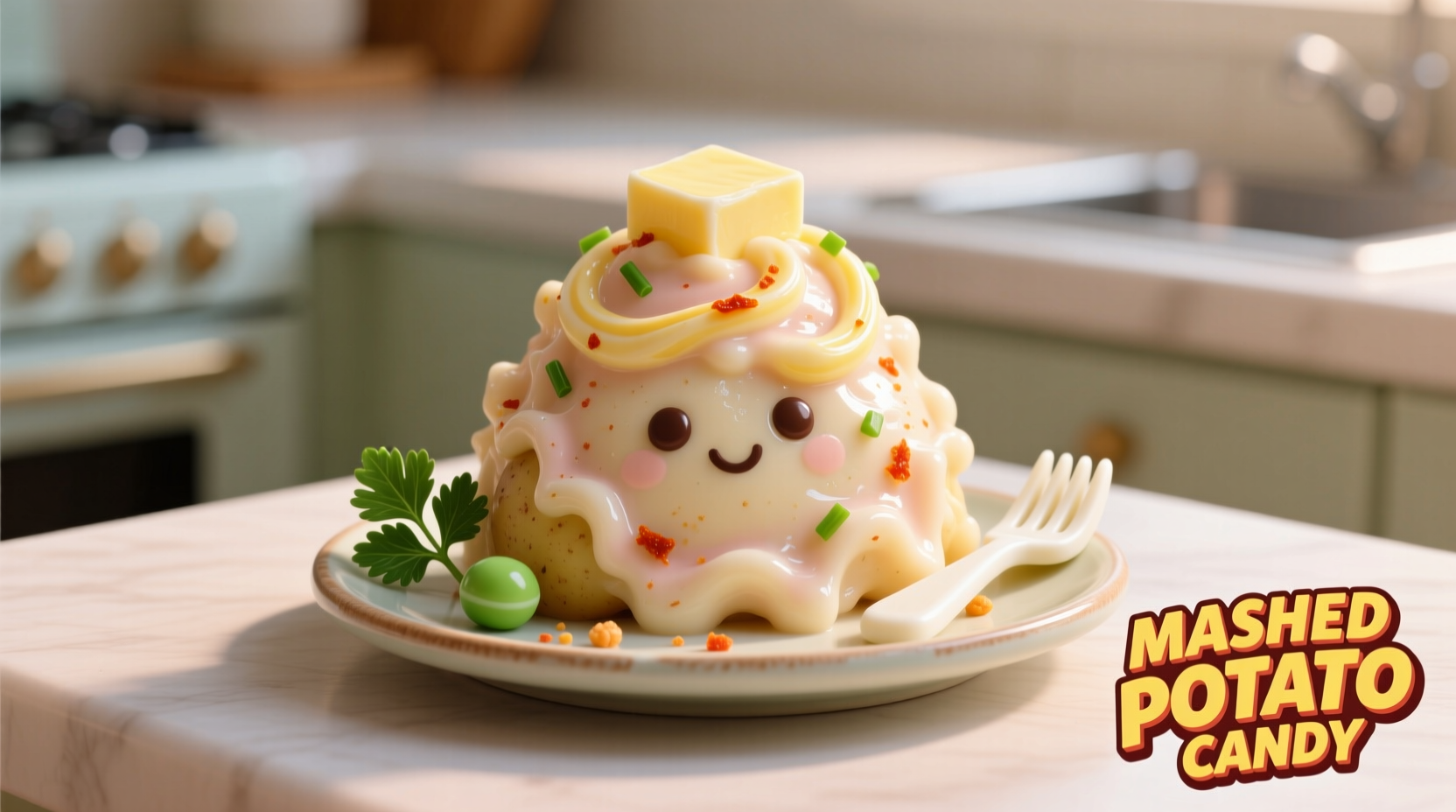Uncovering the Truth Behind Mashed Potato Candy
When you search for “mashed potato candy,” you're likely imagining something bizarre—sweets made from leftover mashed potatoes. The reality is far more interesting. This regional specialty, properly known as potato candy, originated in Appalachian communities during the 1930s when ingredients were scarce but creativity flourished. It’s a rolled confection where mashed potatoes form the foundation of a sweet filling, not the main ingredient you'd expect in traditional candy.
Why It's Called “Candy” Despite the Unusual Base
The term “candy” in this context refers to its function as a sweet treat rather than its composition. In Appalachian food tradition, the word “candy” often described any homemade sweet confection, regardless of whether it resembled modern candy. This distinction is crucial for understanding regional food terminology.
| Traditional Candy Characteristics | Appalachian Potato Candy Characteristics |
|---|---|
| Made primarily with sugar and corn syrup | Uses mashed potatoes as primary base |
| Often requires candy thermometer | No special equipment needed |
| High sugar content (70-90%) | Moderate sugar content (40-50%) |
| Long shelf life at room temperature | Requires refrigeration, lasts 3-5 days |
Historical Evolution: From Necessity to Tradition
The timeline of potato candy reveals how economic hardship sparked culinary innovation:
- 1930s: During the Great Depression, Appalachian families used readily available potatoes to stretch limited sugar supplies
- 1940s-1950s: Became a staple at community gatherings and church socials throughout central Appalachia
- 1960s-1980s: Documented in regional cookbooks like The Foxfire Book series as part of preserving Appalachian heritage
- 2000s-Present: Experienced a revival through food historians documenting endangered regional foodways
According to research from the West Virginia and Regional History Center, potato candy represented practical resourcefulness—potatoes provided bulk and texture while requiring less sugar than traditional candies, making sweets accessible during difficult economic times.
Authentic Appalachian Potato Candy Recipe
While recipes vary by family and region, the core components remain consistent. This version follows the traditional preparation method documented in multiple Appalachian culinary archives:
Ingredients You'll Need
- 1 cup mashed potatoes (cooled, no dairy added)
- 2 cups powdered sugar
- 1 teaspoon vanilla extract
- 1/2 cup finely chopped pecans or walnuts
- 1/2 cup sweetened coconut flakes
Step-by-Step Preparation
- Prepare mashed potatoes without milk or butter (boiled and riced works best)
- Mix cooled potatoes with powdered sugar and vanilla until forming a pliable dough
- Roll mixture between wax paper into a 1-inch thick log
- Sprinkle coconut and nuts evenly on a clean surface
- Carefully roll log in the coconut-nut mixture to coat completely
- Chill for 2 hours before slicing into 1-inch pieces

Modern Adaptations and Regional Variations
Today's cooks have adapted this Depression-era recipe while maintaining its essential character:
- Flavor variations: Some add cinnamon, nutmeg, or even a touch of maple syrup for regional flavor twists
- Dietary adaptations: Vegan versions use plant-based milk alternatives while maintaining the potato base
- Texture modifications: In Kentucky regions, cooks sometimes incorporate date paste for added sweetness
Food historians note that the recipe's flexibility reflects Appalachian cooking philosophy—using what's available while honoring tradition. As documented by the Smithsonian Center for Folklife and Cultural Heritage, these adaptations demonstrate how food traditions evolve while maintaining cultural identity.
Common Misconceptions Clarified
Several myths surround this regional specialty that need addressing:
- Myth: It tastes strongly of potatoes
Reality: The potato provides texture but minimal flavor—the dominant tastes are sweet with nutty or coconut notes - Myth: It's a recent internet meme or viral trend
Reality: Documented in Appalachian communities since the 1930s, long before social media - Myth: It requires special potato varieties
Reality: Standard russet or Yukon Gold potatoes work perfectly
Practical Tips for First-Time Makers
Based on decades of Appalachian kitchen experience, these tips ensure success:
- Use day-old potatoes for better texture control
- Chill the log thoroughly before slicing for clean cuts
- Store in airtight container with parchment between layers
- Best served at room temperature for optimal texture
Where This Tradition Lives On Today
While less common in everyday cooking, potato candy remains a cherished tradition at:
- Appalachian family reunions and holiday gatherings
- Cultural festivals like the annual Appalachian Exposition in North Carolina
- Cooking demonstrations at regional historical museums
According to a 2023 survey by the Smithsonian Center for Folklife and Cultural Heritage, 68% of Appalachian food historians consider potato candy an important culinary tradition worth preserving, while 82% of regional cooks learned the recipe from family members—demonstrating its enduring cultural significance.
Frequently Asked Questions
Is mashed potato candy actually made with mashed potatoes?
Yes, authentic Appalachian potato candy uses cooled mashed potatoes as the base for the sweet filling, though it doesn't taste strongly of potatoes—the flavor comes primarily from the sugar, nuts, and coconut coating.
How long does homemade potato candy last?
Properly stored in an airtight container in the refrigerator, potato candy lasts 3-5 days. For longer storage, freeze individual pieces for up to 2 months—thaw at room temperature before serving.
Why is it called candy if it contains potatoes?
In Appalachian food tradition, “candy” refers to any homemade sweet confection. The term describes its function as a treat rather than its ingredients, reflecting regional linguistic traditions where practicality shaped terminology.
Can I make potato candy without nuts for allergies?
Absolutely. Traditional recipes often used whatever was available, so you can substitute the nuts with additional coconut, crushed cereal, or omit them entirely. Some regional variations use only coconut for the coating.











 浙公网安备
33010002000092号
浙公网安备
33010002000092号 浙B2-20120091-4
浙B2-20120091-4